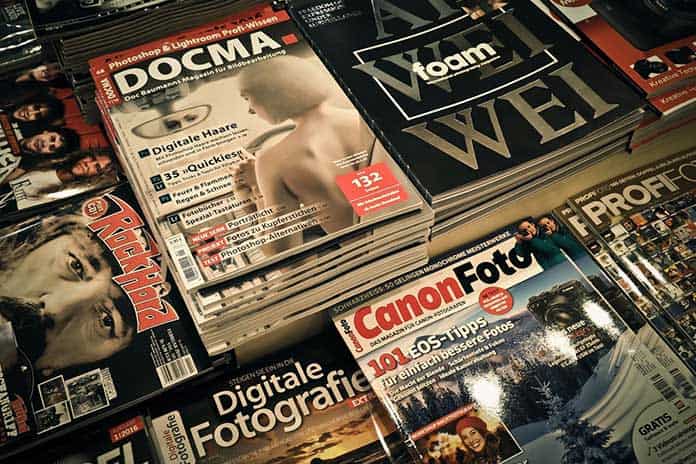5 Steps To Make A Magazine

The magazine is an excellent means of communication to report on different topics or on a specific area. Although when we hear his name, the publications that we can find in kiosks and stationeries almost always come to mind, there are also professional, academic, business magazines and, ultimately, for more specialized and small audiences.
Behind every magazine there has previously been an idea. Someone or a team of people have decided to take the step of creating a public platform in which to spread information of general interest to the population or to a specific audience. However, a magazine idea must be well developed, argued and with an action plan that must take into account different aspects, including graphic design. As it happens when printing catalogs, business cards, envelopes, brochures or flyers, among other products, these require a prior layout so that all its elements are printed and can be bound correctly. What aspects must be considered?
Who will be my main reader?
Before deciding on the design criteria for a magazine, a series of questions would have to be answered to define its parameters and scope well. First of all, it is necessary to specify the profile of the audience that we want to target, that is, who we want the reader of our publication to be. Having the target well defined will make it much easier for us to continue with the project and define the content to be incorporated, the style and above all the aesthetic or design criteria. Editing a magazine for teenagers is not the same as for a reader between 40 and 60 years old.
What frequency will my magazine have?
How often will it be published? Generally, a magazine can be published biweekly, monthly, every two months, or quarterly. There are also some that do two editions a year and even one. Everything will depend on the type of magazine we are making and its pages (for sale to the public, by subscription, etc.) and above all on the availability of content. An associative magazine, for example, will not have as much information at their fingertips to publish every month. On the other hand, another publication with a theme of general interest or consumption and that is sold to the public, will certainly be able to launch it on the market more regularly.
What technical aspects should I consider?
Within this section it is necessary to analyze and decide aspects such as the format or size it will have (A4, A5, special format, tabloid, etc.), paper to be used (grammages, glossy or matte, varnished, etc.), color (full color or black and white), and printing (digital or offset technology). Within this phase it is important to begin to be clear about which printing company will be in charge of printing the magazine.
What do I have to know about graphic design?
This is one of the most important phases that consists in shaping and structuring the information that will appear on your pages through a logical and well thought-out design. It is one of the stages that surely takes the longest to reach a consensus because it is essential to hit the target. From the audience we will have, the format, type of paper, etc., we must offer a consistent and consistent design, but above all that captures the attention and invites its reading to the end.
At this point, topics such as the typography to be used, size, different pieces that will make up an information (headlines, headings, highlights, photographs, illustrations, exploded views, etc.), the main colors that will dominate and that mark their own style, colors secondary or alternative, etc.
What program can I use to lay out my magazine?
The creative team or graphic designers will be in charge of making the basic layout or layout where the content will be incorporated later. It is always advisable to work from a base template that contains the previously agreed design criteria. For this there are different editing software such as QuarkXPress, Adobe InDesign, Freehand and other complements that can also help us such as Illustrator, Photoshop or CorelDraw, among others.
What content will my magazine have?
The editorial team will be in charge of defining the information that will be published in the magazine according to its editorial line. Most commonly, all staff in this department conduct writing councils, led by the editor-in-chief and director of the publication, where they discuss and define topics that are interesting to the audience before developing them. Every publication, regardless of its frequency, must work with a closing date, that is, set the day on which everything is finished (writing, design, etc.) in the calendar. Normally, when marking the date, certain variables are taken into account, such as the days needed for printing, finishing, handling, shipping, etc.
Taking all these aspects into account, you can start designing and publishing a magazine. The last word will be left to the reader who will decide if he finally likes it or not. You never have to worry about a lower than expected result because from the first number you can always make adjustments until you achieve the goal you want.
